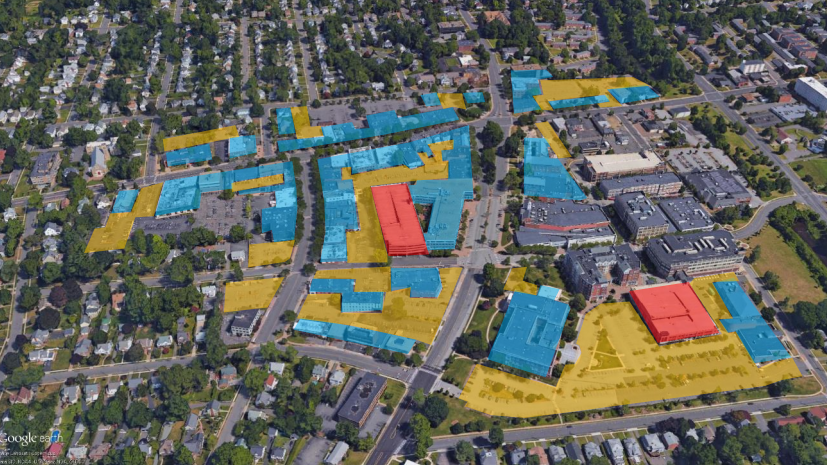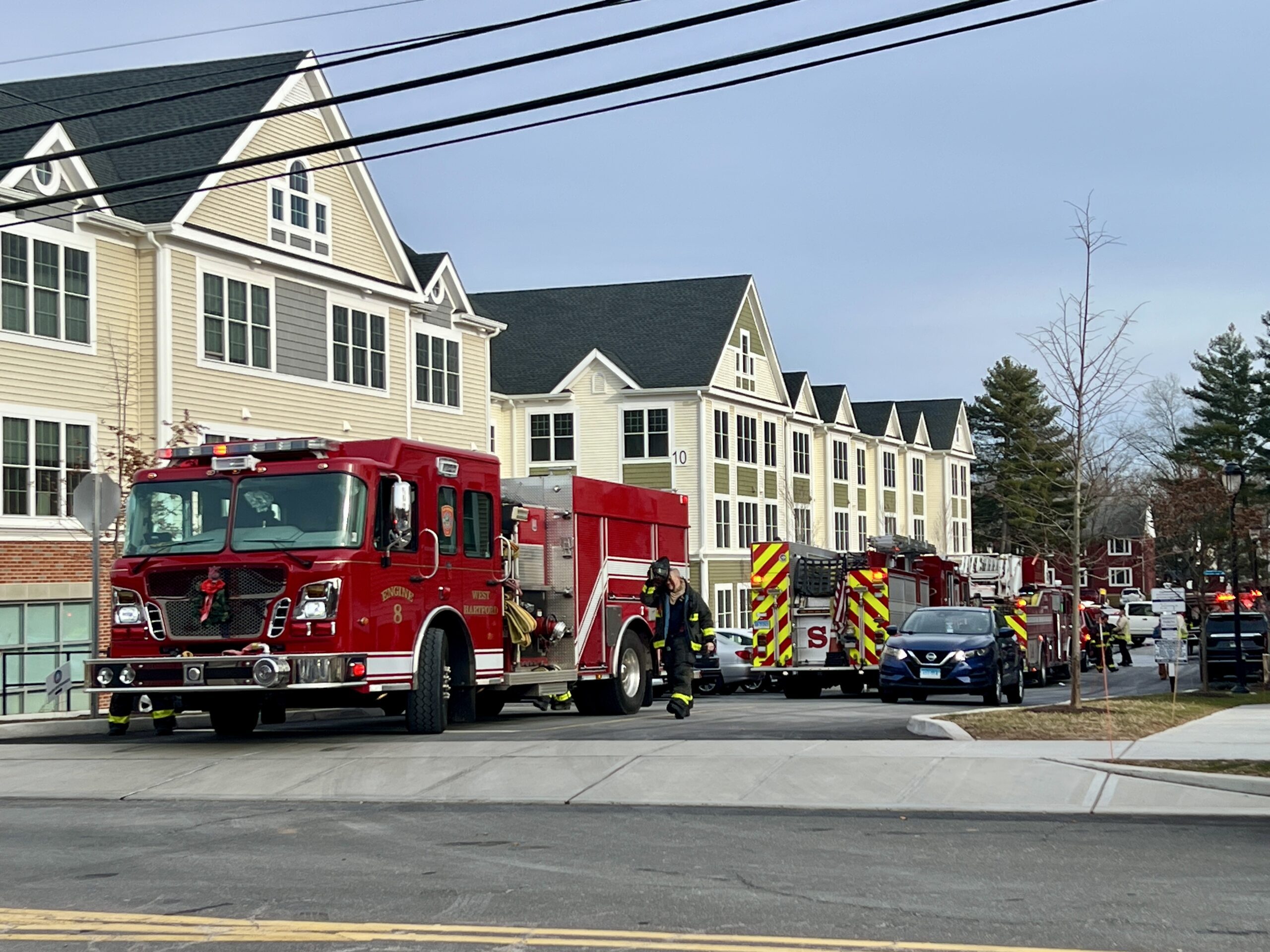West Hartford Town Planner Shares Results of Center Development Outreach

Audio By Carbonatix

West Hartford's Central Business District. (we-ha.com file photo)
At a meeting of the Town Council’s Community Planning and Physical Services, Town Planner Todd Dumais provided an update as plans move forward to finalize a vision statement for West Hartford Center.
By Abigail Albair, West Hartford Press Editor
[Editor’s Note: This article first appeared in the May 18 edition of the West Hartford Press. Read the edition here. Read the paper weekly at turleyct.com.]
After months of working group meetings, public outreach, and surveys to gather feedback, the Town Plan and Zoning Department presented its findings regarding public opinion of future development in West Hartford Center to the Town Council’s community planning committee Tuesday, May 16.
Town Planner Todd Dumais took committee members through a summary of the process and the resulting vision statement, and offered excerpts from public comments.
The review of the town’s Central Business District zone came about following the failure of two zoning ordinance changes before the Town Council. Both had to do with density in the BC zone.
The Town Council passed a resolution establishing the working group of neighbors and property owners to examine the zoning possibilities in the Center in October of last year.
An ordinance amendment brought forth to make way for new development in West Hartford Center was denied by the Town Council in September of last year following significant pushback from residents.
The request, brought forth by Lexham Private Investors, LLC, was to change a building’s maximum allowed floor area ratio from 1.25 to 1.5 for a development in the BC zone – which encompasses the Center and an area of Elmwood – as part of a special development district application.
Although several buildings in the Center were constructed prior to the current ordinances, and therefore already exceed the allowed FAR, such as the building on the corner of Farmington Avenue and South Main Street that houses Bruegger’s Bagels, many residents raised concerns with the type of large structures that may be approved if the FAR were increased.
A similar, though much more broad, ordinance change was proposed by the town in April of 2016 to permit an increase in density in the BC zone from an FAR of 1.25 to 1.75, as well as to allow an increase in building height to five stories if residential in nature. Additionally, that ordinance change would have excluded a private parking garage area for residential, commercial tenants, and patrons and guests from the maximum FAR calculation.
That proposal was ultimately withdrawn after public hearings, at which time the council promised a study and community outreach on the topic before bringing it forward again.
The study and resulting Central Business District Planning Initiative were done with the help of consultant Fitzgerald & Halliday. The effort was focused on the Center and the BC zone, as well as the neighborhoods adjacent to the Center, Dumais explained.
In the area of business and property uses, the variety of restaurants, connection of the Center to local neighborhoods, and the status of the Center as a destination were all listed as strengths, while parking and high rents, as well as the transition of restaurants into bars, were noted as problems.
The diversity and character of architectural styles was noted as a strength, while aging facades and maintenance issues were cited as areas for improvement.
The loss of historic structures and the threat of tall buildings out of scale were also a concern.
The parking kiosks and ability to park in one spot and walk to many destinations were highlighted as strengths of mobility in the Center, but forum attendees said there is not enough parking and that expensive parking fees cause vehicles to spill onto residential streets. Ideas noted included an increase of mass transit awareness and the addition of bike lanes and racks, as well as residential parking passes.
Those in attendance also called for more functional open space in the center and creative use of LaSalle Road in a “Quincy Market” style for a farmers market, or other events that close streets to vehicular traffic.
More than 700 people responded to an online survey about the Center and future development. More than half of the respondents live in town but outside the Center itself. Roughly 30 percent of respondents live within a five-minute walk, Dumais said.
Respondents noted a variety of reasons for which they visit the Center, most popular of which were dining, shopping and usage of the library and Town Hall. Most said they arrive by car, though 326 respondents said they arrive on foot or by bike.
Nearly 80 percent of respondents lauded the pedestrian nature of the Center, the mix of restaurants and perception of safety, as well as shops and services, while parking and the night life were the least favorable things about the area.
“Our center makes our community unique among towns our size,” one respondent wrote. “It is sad that other towns never enjoy such a gathering place – they stay divided by malls.”
Still others called for free parking or a better mix of offerings, including more retail, as well as more artistic offerings to draw an eclectic crowd.
Regarding density, one respondent said the Center needs “Goldilocks density,” meaning a “just right” fit.
“Dense enough to support vibrant main streets with retail and services for local needs, but not too high that people can’t take the stairs in a pinch,” they wrote. “Dense enough to support bike and transit infrastructure, but not so dense to need subways and huge underground parking garages. Dense enough to build a sense of community, but not se dense as to have everyone slip into anonymity.”
Half the respondents said they believe the Center should continue to grow and change incrementally, while roughly 15 percent said they want it to remain as is, and 15 percent said they’d like to see it grow significantly.
Some said they do not want to see any increase in density or scale, while others took a more measured approach, arguing against “inexperienced developers, unfamiliar with the goals of New Urbanism and only interested in a quick return on investment,” while still saying they are open to “incremental smart growth, by which we mean intelligently conceived mixed-use expansion of the Center.”
The Town Plan and Zoning Department crafted and released a draft Vision Statement and Guiding Principles for the Center, for which an online survey was also conducted to solicit feedback. Roughly 90 percent of respondents supported the statement.
The Vision Statement reads: “Ensure West Hartford Center remains a great place for visitors, residents and business investment that fosters a strong sense of community.
“The Center is at the geographic heart of the town and must remain a place that accommodates shopping, dining, leisure, work, housing and governmental services, in an architecturally, economically and socially diverse and pedestrian-friendly environment. To continue as an economic driver and attractive part of the community, the Center must continue to be well-maintained, comfortable and safe for people of all ages, incomes and backgrounds at all times of the day. The attractive look and feel of the Center and its integration into the surrounding neighborhoods is a unique strength and benefit to the town.”
Guiding principles include enhancing the area while preserving the existing open feeling and natural light, encouraging appropriate development and redevelopment consistent with the existing character of the area and current commercial boundaries, managing traffic and parking to reduce impacts on surrounding neighborhoods, embracing the Complete Streets movement, encouraging growth and retention of diversity among businesses to attract visitors from throughout the area, serving all age groups, encouraging the development of additional functional open space and continuing to embrace neighborhood outreach and engagement.
Director of Community Services Mark McGovern called the entire process a “great exercise.”
“I think we did what you asked us to do in [your initial] resolution, which was somewhat broad,” he said to the committee members.
Three members of the working group were present at the May 16 meeting, including Scott Falk, a neighborhood resident who was a vocal opponent to the Lexham proposal.
He told the committee that the presentation working group members heard regarding FAR and the density and commercial district development in comparable communities of Westport, Darien and Greenwich was enlightening.
He said some of those communities take a more “modern approach” than simply tweaking the FAR ordinance, and asked the council members to be open to hearing a similar presentation at a future committee meeting.
He said that presentation “educated us about zoning concepts and what other allied communities are doing,” and also asked the Council members to consider adopting the Vision Statement as an addendum to the Plan of Conservation and Development.
“This is a great Vision Statement and reflects a lot of thought … but it’s not an ordinance,” he said. “I think that’s the next discussion, and I think the group, or some subset of a group, would be willing to help push it forward quickly. … We’d like to ask the council to get down to brass tacks about ordinances that can guide development of the community for the next 20 or 30 years.”
No official action was taken at the meeting, though committee members said there will be more discussion at a future meeting.
Like what you see here? Click here to subscribe to We-Ha’s newsletter so you’ll always be in the know about what’s happening in West Hartford!




[…] Those were the result of months of working group meetings, public outreach and surveys to gather feedback. The Town Planning and Zoning Department then presented its findings regarding public opinion of future development in the Center to the community…. […]